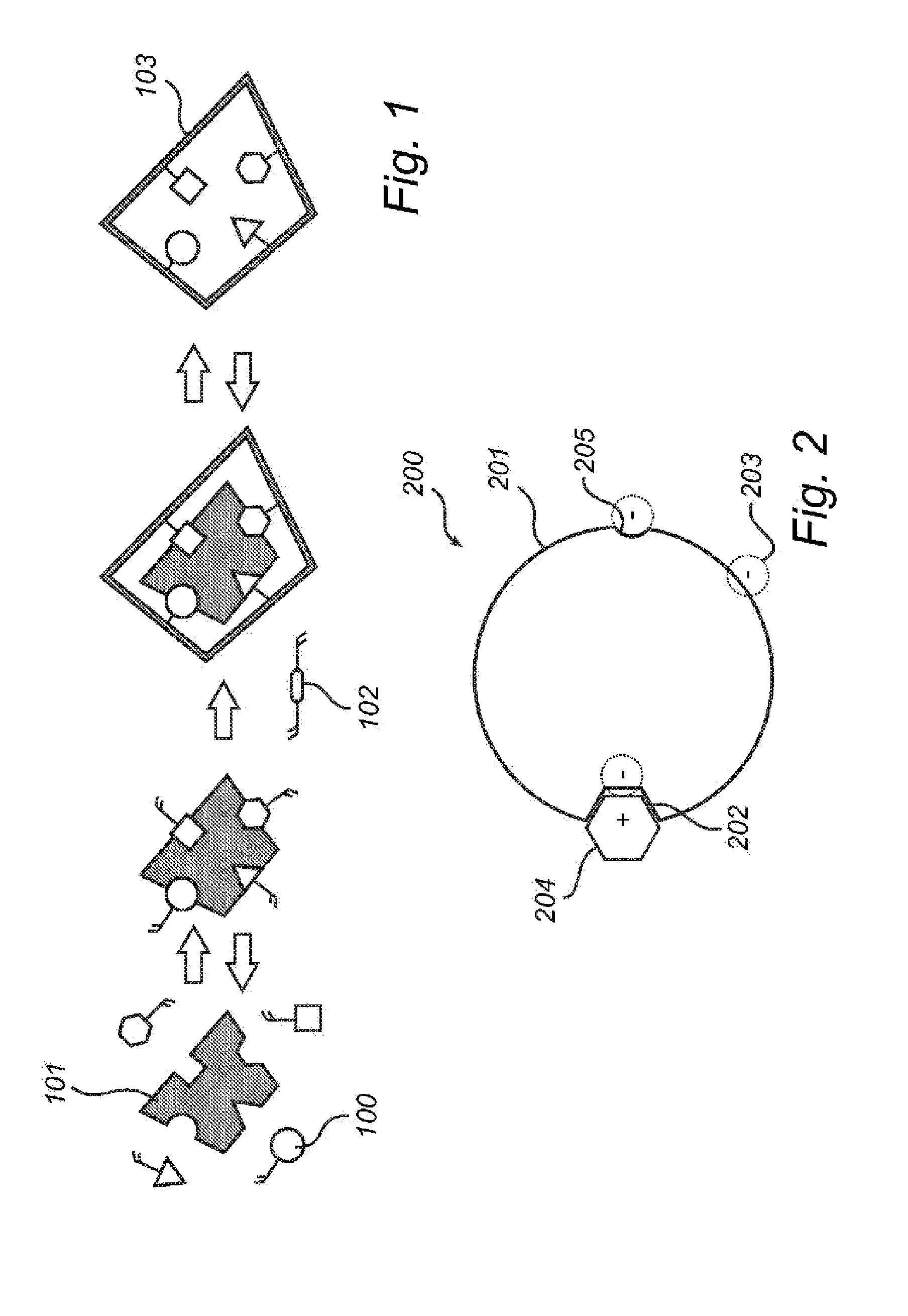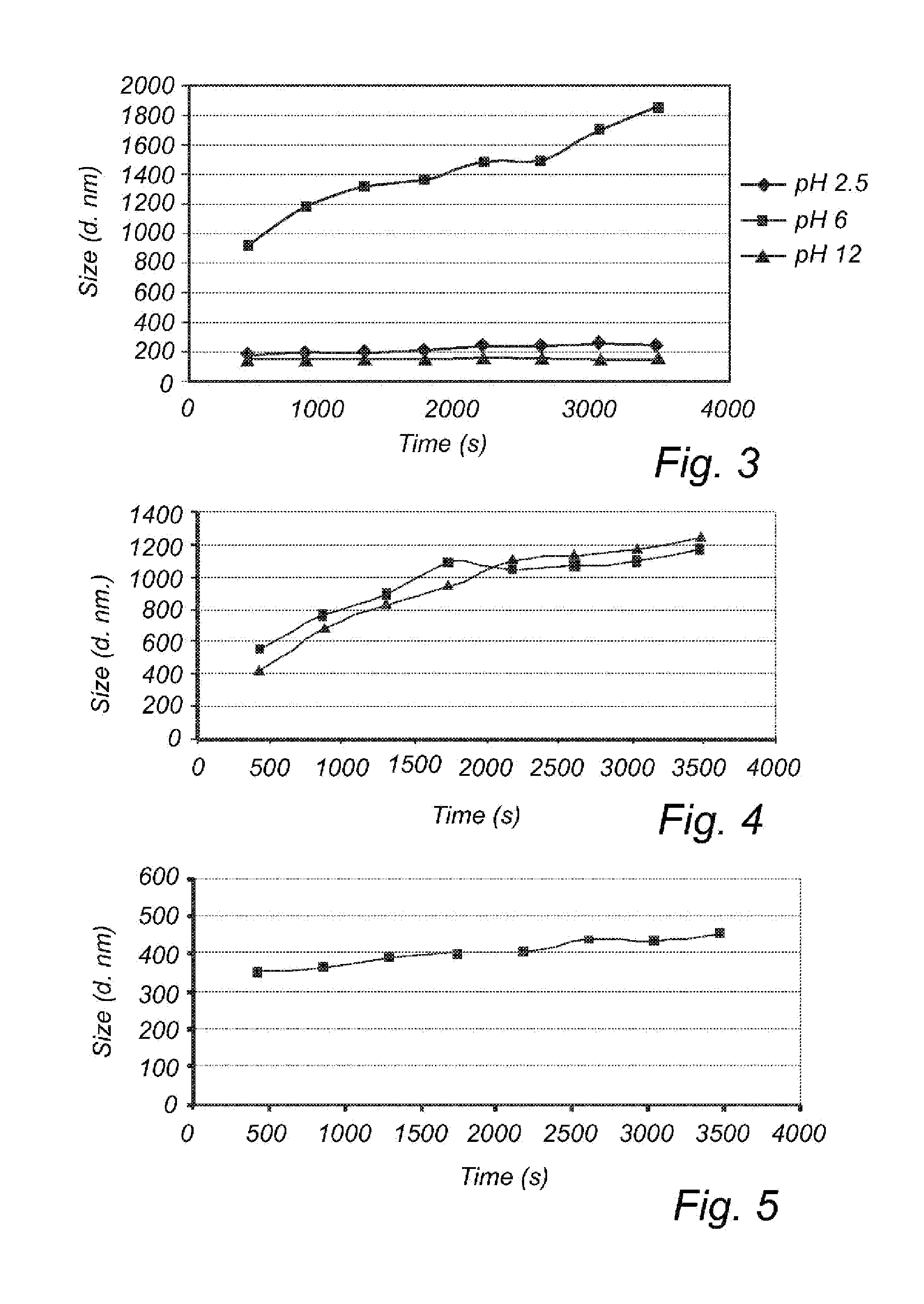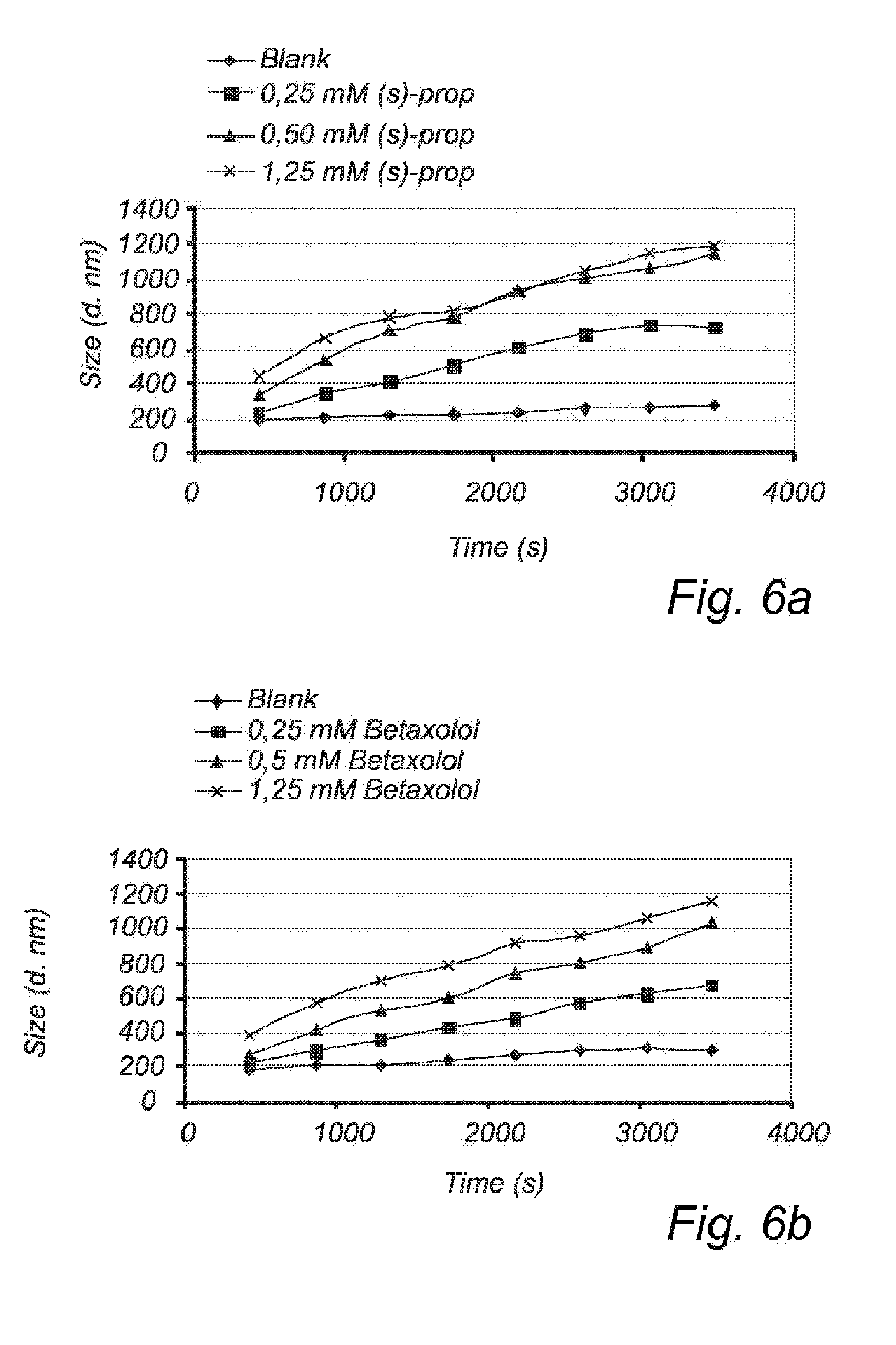Customized molecularly imprinted polymer (MIP) units
- Summary
- Abstract
- Description
- Claims
- Application Information
AI Technical Summary
Benefits of technology
Problems solved by technology
Method used
Image
Examples
examples
Synthesis of Imprinted and Non-Imprinted Nanoparticles
[0203]Molecularly imprinted (MIP) nanoparticles were synthesized using a precipitation polymerization method described in a previous publication (Yoshimatsu et al., 2007). Briefly, the template molecule, (S)- or (R)-propranolol in its free base form (137 mg, 0.53 mmol) was dissolved in 40 ml of acetonitrile in a 150 mm×25 mm borosilicate glass tube equipped with a screw cap. MAA (113 mg, 1.31 mmol), TRIM (684 mg, 2.02 mmol) and AIBN (28 mg, 3 wt % of monomer) were then added. The solution was purged with a gentle flow of argon for 5 min and sealed under argon. Polymerization was carried out by inserting the borosilicate glass tube in a water bath pre-set at 60° C. for 24 h. After polymerization, particles were collected by centrifugation at 18000 rpm (38000 g) for 20 min. The template was removed by batch-mode solvent extraction with methanol containing 10% acetic acid (v / v), until no template could be detected from the washing s...
PUM
| Property | Measurement | Unit |
|---|---|---|
| Fraction | aaaaa | aaaaa |
| Fraction | aaaaa | aaaaa |
| Fraction | aaaaa | aaaaa |
Abstract
Description
Claims
Application Information
 Login to View More
Login to View More - R&D
- Intellectual Property
- Life Sciences
- Materials
- Tech Scout
- Unparalleled Data Quality
- Higher Quality Content
- 60% Fewer Hallucinations
Browse by: Latest US Patents, China's latest patents, Technical Efficacy Thesaurus, Application Domain, Technology Topic, Popular Technical Reports.
© 2025 PatSnap. All rights reserved.Legal|Privacy policy|Modern Slavery Act Transparency Statement|Sitemap|About US| Contact US: help@patsnap.com



